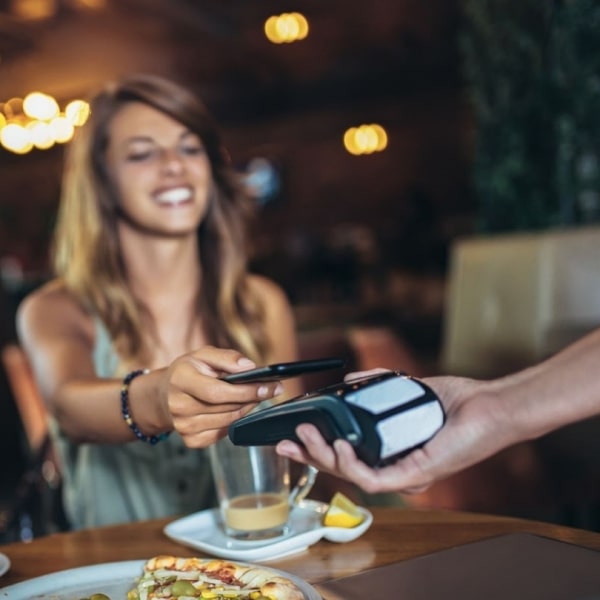Payments with digital wallets are one of the most secure payment methods | Luminor
Payments with digital wallets are one of the most secure payment methods

More and more banks offer convenient payment options by using digital wallets such as Google Pay or Apple Pay that don’t require customers to have their payment cards on hand, further boosting the popularity of payments with digital devices. Payments with digital wallets are one of the safest payment methods where the number of fraudulent transactions is quite limited; nevertheless, it’s important that customers follow the necessary safety precautions.
Visa, one of the largest international payment technology companies, offers its customers Visa Token Service, which replaces the personal information on credit cards, such as the 16‑digit card number and security code, with an individual digital identifier that acts as a token. This token digitally processes payments and keeps account information secure while the tokenized payment card is linked to the user's digital wallet app and smartphone.
“Visa Token Service helps protect every digital wallet transaction by replacing sensitive payment information with a unique digital identifier or token. This encrypted token keeps actual card details private and has no value if compromised,” says Juha Sillanpää, Country Manager of Visa for the Baltics and Finland.
To add a payment card to a smartphone’s digital wallet, one must download the respective app from secure and authorized IOs, Android or other e‑shops and follow the steps to add the card. Once the contactless card has been added to the wallet, the customer can use their device anywhere that accepts contactless payments, including physical stores and public transport, as well as for online and in‑app payments. For in‑store payments with a digital wallet, the customer needs to place their smartphone over the POS terminal – just like with a contactless payment card.
Multi‑factor authorisation
Adding a payment card to a digital wallet requires multi‑factor authorization by way of inputting data and safety codes available to the customer in various channels, for example: their card number and expiration date, CVC/CVV code, PIN code, and a six‑digit one‑time password (OTP) they receive via SMS to the phone number they’ve registered with their card bank.
“Fraudulently adding a payment card to a digital wallet is only possible in cases where the cardholder provides the fraudster with not only their card data, but also the OTP they received in an SMS from the bank. The likelihood of such a coincidence occurring depends only on how careful the cardholder is with the security of his card data and device. If the card has been stolen or the data has been copied, it’s not possible to add the card to a digital wallet unless the thief also has access to the SMS OTP that’s only valid for 30 minutes,” explains Anrijs Šmits, Senior Anti‑Fraud Expert at Luminor Bank in Latvia.
Stay alert and safe
To protect yourself from fraud attacks, keep your payment cards and authorisation data in a safe place that can’t be accessed by a third party. It’s strongly advised not to keep your payment card together with its PIN code and not to allow third parties to use your smartphone without supervision. You should also be very careful about the security of your device. Care should be taken when visiting various links and websites offered, for example, via email or private messages on social networks. Visiting such links may lead to the download of various unwanted programmes or applications (malware) whose main purpose is to extract personal data. Similarly, if you voluntarily install programmes or applications on your device, you should check their origin, security, and authenticity.
“We encourage our customers to use a safe passcode, pattern password, or face or touch ID for their smart devices and to not skip software updates. If you lose your phone, it’s best to get in touch with the bank as soon as possible and ask them to disable the digital wallet function on your card,” Šmits suggests.
